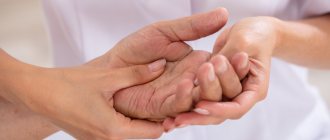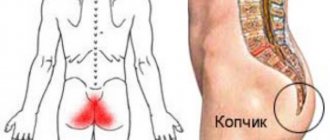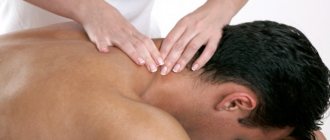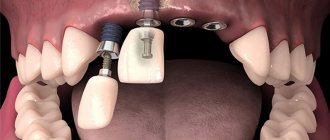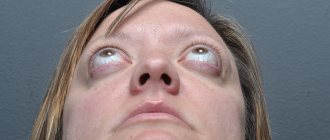If pain in the foot occurs, you should immediately contact an orthopedist, traumatologist and rheumatologist. Many people think that foot pain can only be caused by injury or flat feet. However, pathological processes can be of inflammatory origin and develop as a result of circulatory disorders or neurological diseases. Regardless of the reason for the development of such a symptom, you should not delay consulting a doctor. It is recommended to undergo comprehensive foot treatment using MBST therapy at ArthroMedCenter.
General characteristics of the symptom
The causes of pain in the foot can be caused by orthopedic, neurological or vascular pathologies. Many diseases are accompanied by pain and impairment of all three types simultaneously. This makes diagnosis and therapeutic measures difficult.
With the development of joint diseases, neurological and vascular disorders may also appear. At the same time, nerve roots are compressed, blood vessels narrow, and blood microcirculation is disrupted. To determine the cause of foot pain, it is necessary to conduct a comprehensive examination.
Painful sensations in the foot that appear directly during physical activity can be provoked by the following factors:
- smoking, as blood vessels narrow, blood circulation worsens;
- general or local hypothermia of the body;
- previous or recent injuries;
- infectious processes;
- wearing uncomfortable shoes, shoes or boots;
- the influence of excessive physical exertion, prolonged standing;
- excess weight;
- dehydration of the body.
A very common cause of pain is prolonged wearing of uncomfortable, ill-fitting shoes. The foot suffers equally from wearing sneakers or ballet shoes with too flat soles, as well as from high-heeled shoes.
By constantly wearing flat-soled shoes, a gradual deformation of the foot occurs, which increases the risk of developing flat feet. When wearing high-heeled shoes for a long time, deformation of the arch of the foot and toes occurs.
By contacting specialists in a timely manner, further development of the deformity can be prevented. For this, doctors prescribe special therapeutic exercises, medications to combat uric acid deposits, and massage. If the cause of pain is an injury, it is necessary to visit a traumatologist as soon as possible. Examination and treatment of the foot joints are necessary, regardless of the degree of damage.
Treatment
First aid
The limbs provide rest and an elevated position. For skeletal injuries, apply cold and immobilize with a splint or fixing bandage. In case of frostbite, an insulating bandage is applied; intensive warming of the feet is prohibited, as it can aggravate existing tissue damage. For non-traumatic foot pathologies, local anti-inflammatory and painkillers are used.
Conservative therapy
For fractures and dislocations, blockades, reduction or reduction, and application of a plaster cast are performed. The conservative treatment plan includes:
- Protective mode.
The specialist determines the mode of physical activity, the intensity of the load on the limb, and, according to indications, recommends the use of orthopedic devices and additional means of support (crutches, canes). - Drug therapy.
NSAIDs of general and local action are most often used. Infectious diseases require the prescription of antibacterial or antiviral drugs, vascular pathologies require medications to normalize blood circulation, diabetes mellitus require correction of antidiabetic therapy. - Non-drug methods.
Patients are referred for exercise therapy, massage, manual therapy, physiotherapeutic treatment (electrical stimulation, electrophoresis, UHF, laser treatment, etc.).
Causes
Let's look at the main causes and diseases that can lead to painful symptoms in the foot area.
Foot pathologies
The most common causes of foot pain include pathologies and anomalies in its development. Hallux valgus deformity causes a lot of inconvenience. This disease is characterized by curvature of the ankle joints and feet, which changes the support of the heel. The fact that there is deformation is indicated by a significant distance between the heels and the foot.
The disease is characterized by a curvature of the axis of the foot, in which the middle part of the foot drops, the heel turns outward, and its edge drops. The cause of the pathology is a congenital or acquired disorder of the functions, shape or size of the bone, muscle or ligamentous apparatus.
This deformity is often accompanied by flat feet, in which the bones of the foot are displaced. The development of the disease occurs at an early age under the influence of congenital dysplasia of connective tissue elements. The following can also trigger the development of deformity:
- osteoporosis;
- rickets;
- polio;
- injuries.
The disease is caused by paralysis, deformed posture, diabetes mellitus or obesity. In adulthood, the cause may be trauma, paralysis, diabetes mellitus and sudden weight gain.
This disease is accompanied by pain in the foot during movement, when wearing incorrectly selected shoes. Additionally, tension occurs in the muscular system, and gait is disrupted. Treatment of the disease in the initial stages of development will be especially effective. Doctors prescribe special gymnastics, orthopedic shoes, massage, physiotherapeutic treatment, ozokerite, paraffin therapy. If the deformity is severe, it is eliminated through surgery.
Other foot pathologies, the development of which is accompanied by painful sensations while walking, include:
- Hyperkeratosis of the feet. It manifests itself as hardening of the skin of the foot. With this disease, skin cells divide very quickly, and the skin thickens. Cracks, hemorrhages, ulcers, and interdigital calluses occur, which manifest as severe pain while walking. The causes of this disease are different - deterioration of blood microcirculation, varicose veins, diabetes mellitus. The disease can be caused by atherosclerosis, psoriasis, as well as wearing uncomfortable shoes with the wrong size. Obesity and deformation of the foot structure also contribute to the appearance of the disease.
- Diabetic foot syndrome. It is a dangerous consequence of diabetes. The disease is fraught with amputation of the foot. When blood sugar rises, blood access to tissues worsens. The risk of skin trauma increases, and the sensitivity of neurons worsens due to high glucose levels. With any damage to the skin there is a danger of ulcers and ulcers. The most dangerous consequence is gangrene and amputation of the limb.
- Deformation of the phalanx of the fingers. It is accompanied by pain, cramps, ulcers, and chronic joint diseases.
- Bone on the thumb. Accompanied by constant pain while walking. It is often caused by bursitis or gout.
Inflammatory diseases
The motor function of the lower extremities is ensured by the general function of muscles, tendons and their membranes, ligaments, fascia, and capsules.
Let's consider the inflammatory processes that develop in soft tissues:
- tendonitis – its development is characterized by an inflammatory process in the tendon tissues;
- tenosynovitis – tissue in the tendon becomes inflamed;
- enthesitis - tendon tissue becomes inflamed at the site of attachment to the bone;
- bursitis is an acute inflammatory process in the periarticular bursa;
- plantar fasciitis – the area between the heel and foot becomes inflamed;
- arthritis, arthrosis, gout, osteoporosis, osteoarthritis are diseases of the articular system that are accompanied by an inflammatory process in the joint.
The main reasons for the development of inflammatory diseases are:
- too high static load;
- previous injuries;
- frequent tendon blockades with glucocorticosteroids;
- abnormal development of the joint;
- physical inactivity;
- deterioration of blood circulation;
- age factor.
Circulatory disorders
The most common pathological conditions include:
- Obliterating endarteritis. Accompanied by severe vasoconstriction.
- Leriche's syndrome.
- Peripheral arterial occlusion.
- Atherosclerosis.
In most cases, a diagnosis of obliterating atherosclerosis is made. It is chronic. The cause is considered to be a failure of the metabolism of lipid structures, against the background of which atherosclerotic plaques form, the walls of the arteries thicken, and the clearance between the walls of the vessels decreases. This is how ischemia develops, in which oxygen does not reach the tissues in sufficient quantities.
Osteoporosis
With the development of osteoporosis, calcium is lost in bone tissue. Often such pathological processes develop in elderly people. The causes of this disease include:
- age-related changes in joints and tissues;
- obesity;
- smoking;
- frequent consumption of alcoholic beverages;
- physical inactivity;
- hormonal imbalances;
- poor nutrition, dysfunction of the digestive system;
- side effects of taking medications;
- previous injuries, arthritis, arthrosis.
Neurological pathologies
Polyneuropathy is accompanied by damage to small peripheral nerves, muscle rigidity, tremor, deterioration of sensitivity and paresis. The main causes of polyneuropathy are:
- High blood sugar.
- Avitaminosis.
- Toxic tissue damage.
- Past infections.
- Suffered severe injuries and surgical intervention.
- Disturbances in the functioning of the immune system.
- Genetic predisposition.
- Hormonal imbalance.
Diagnosis of heel pain
Diagnosis and determination of the cause of heel pain is carried out by an orthopedic traumatologist or rheumatologist; consultation with other specialized specialists (neurologist, oncologist, infectious disease specialist) may also be required.
Diagnosis begins with an oral questioning of the patient about the specifics of heel pain, history taking, palpation, and motor tests. Based on preliminary observations, the doctor issues further directions.
To confirm or refute existing hypotheses regarding heel pain when stepping, the following is used:
- general and biochemical blood test, analysis for tumor markers and rheumatic factor;
- microbiological and bacterioscopic studies (synovial fluid, sputum, etc.);
- determination of blood glucose levels;
- X-ray of the affected limb;
- puncture biopsy (if bone tuberculosis is suspected);
- Ultrasound (to detect damage to bones, blood vessels, etc.);
- magnetic resonance or computed tomography;
- electroneuromyography.
MBST therapy for foot diseases
The MBST device is used to treat diseases of the joint and musculoskeletal system. Under the influence of the installation, metabolism is restored and blood microcirculation processes are improved. This effect is due to the resonance of the magnetic field.
This method is very effective. It will prevent the consequences of the trauma from developing. You can sign up for the MBST therapy procedure at ArthroMedCenter. This technique will help you quickly get rid of foot pain.
How to treat fasciitis correctly
The most effective and lasting treatment is always aimed at eliminating the cause of the disease. The main factors in the development of fasciitis are overload of the foot and decreased elasticity of the fascia. Therefore, actions aimed at unloading the arches and improving the quality of the ligaments lead to the most noticeable results. Most importantly, effective treatments for fasciitis are safe.
Plantar fasciitis is a disease that requires the active participation of the patient himself. Of course, it seems easier to give the injection and forget about the pain. But until the patient himself improves the functioning of his body, the symptoms will return and increase. Below are the most effective methods for finally getting rid of pain between the toe and heel:
- High-quality orthopedic insoles. It's better if they are individual. The elastic protrusions of the instep supports massage the aponeurosis, improve its blood circulation and elasticity. The right insoles support the arches well and relieve excess stress on the fascia.
- Physical exercise. A competent rehabilitator will describe a training regimen and “stretching” that will work most effectively for you. With regular exercise, it is possible to increase the elasticity of the fascia and muscles, which will significantly reduce discomfort.
- Night tires. Durable plates that are worn on the leg during sleep and improve the metabolism of the aponeurosis. During the night period, body tissues are most pliable, which gives the splint the opportunity to effectively increase their elasticity.
Medtechnika Orthosalon stores are professional establishments where you can undergo foot diagnostics and select the most suitable orthopedic products. A large selection of therapeutic and prophylactic insoles, massagers and splints allows you to individually approach any form of fasciitis. Experienced consultants will help you decide on the optimal models to improve the performance of your feet.
Prevention
It is important to be attentive to your health and pay attention to the slightest changes in the body. It is also recommended to follow simple rules:
- adjust your diet and lifestyle, add minimal exercise to your daily routine;
- if necessary, wear orthopedic insoles or shoes;
- choose the right shoe size, it should be comfortable;
- adjust your weight;
- walk barefoot more;
- perform self-massage.
